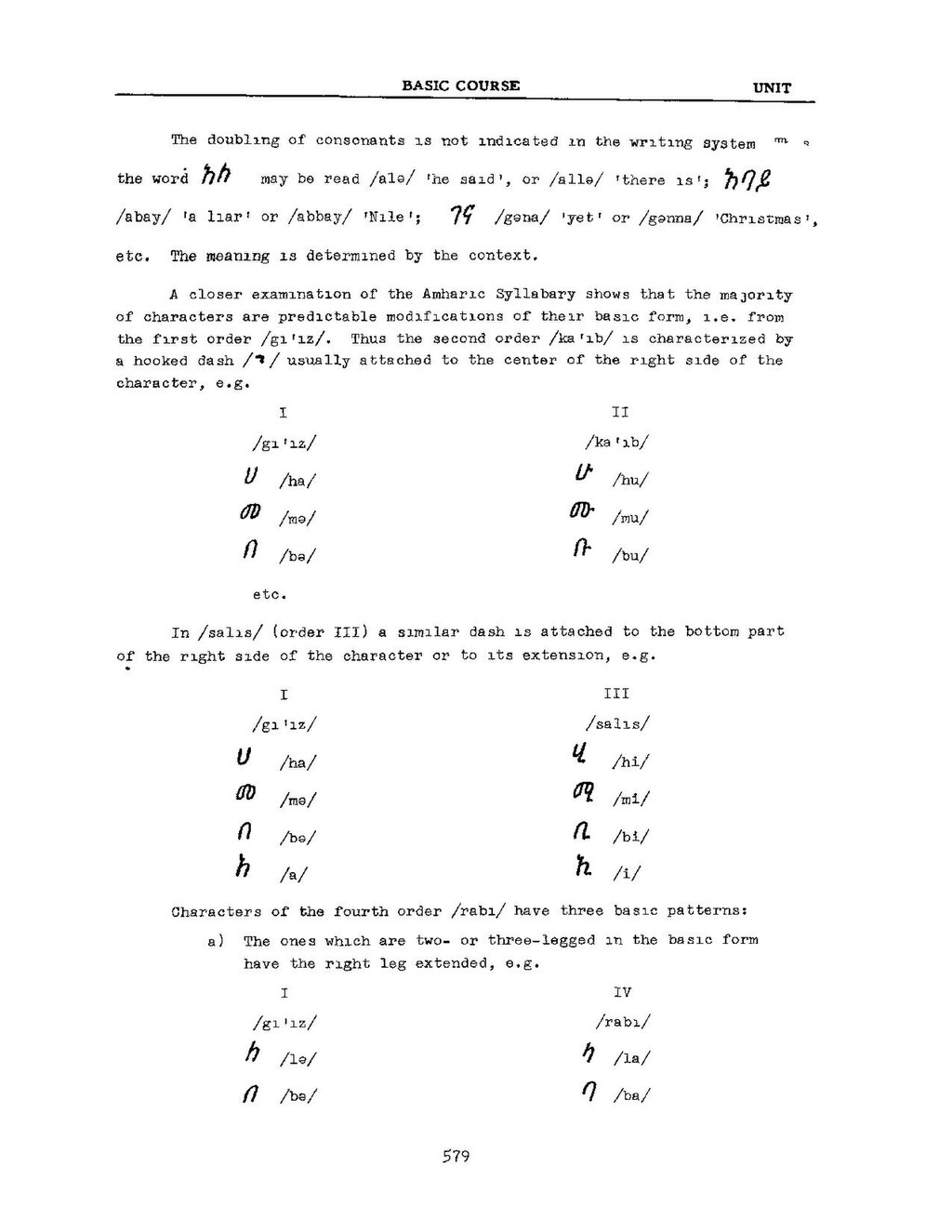The doubling of consonants is not indicated in the writing system. The word አለ may be read /alə/ 'he said' or /allə/ 'there is'; አባይ /abay/ 'a liar' or /abbay/ 'Nile'; ገና /gəna/ 'yet' or /gənna/ 'Christmas', etc. The meaning is determined by the context.
A closer examination of the Amharic Syllabary shows that the majority of characters are predictable modifications of their basic form, i.e. from the first order /gı'ız/. Thus the second order /ka'ıb/ is characterized by a hooked dash /¬/ usually attached to the center of the right side of the character, e.g.
| I /gı'ız/ |
II /ka'ıb/ | |
| ሀ /ha/ | ሁ /hu/ | |
| መ /mə/ | ሙ /mu/ | |
| በ /bə/ | ቡ /bu/ | |
| etc. |
In /salıs/ (order III) a similar dash is attached to the bottom part of the right side of the character or to its extension, e.g.
| I /gı'ız/ |
III /salıs/ | |
| ሀ /ha/ | ሂ /hi/ | |
| መ /mə/ | ሚ /mi/ | |
| በ /bə/ | ቢ /bi/ | |
| አ /a/ | ኢ /i/ | |
| etc. |
Characters of the fourth order /rabı/ have three basic patterns:
a) The ones which are two- or three-legged in the basic form have the right leg extended, e.g.
| I /gı'ız/ |
IV /rabı/ | |
| ለ /lə/ | ላ /la/ | |
| በ /bə/ | ባ /ba/ |
579
